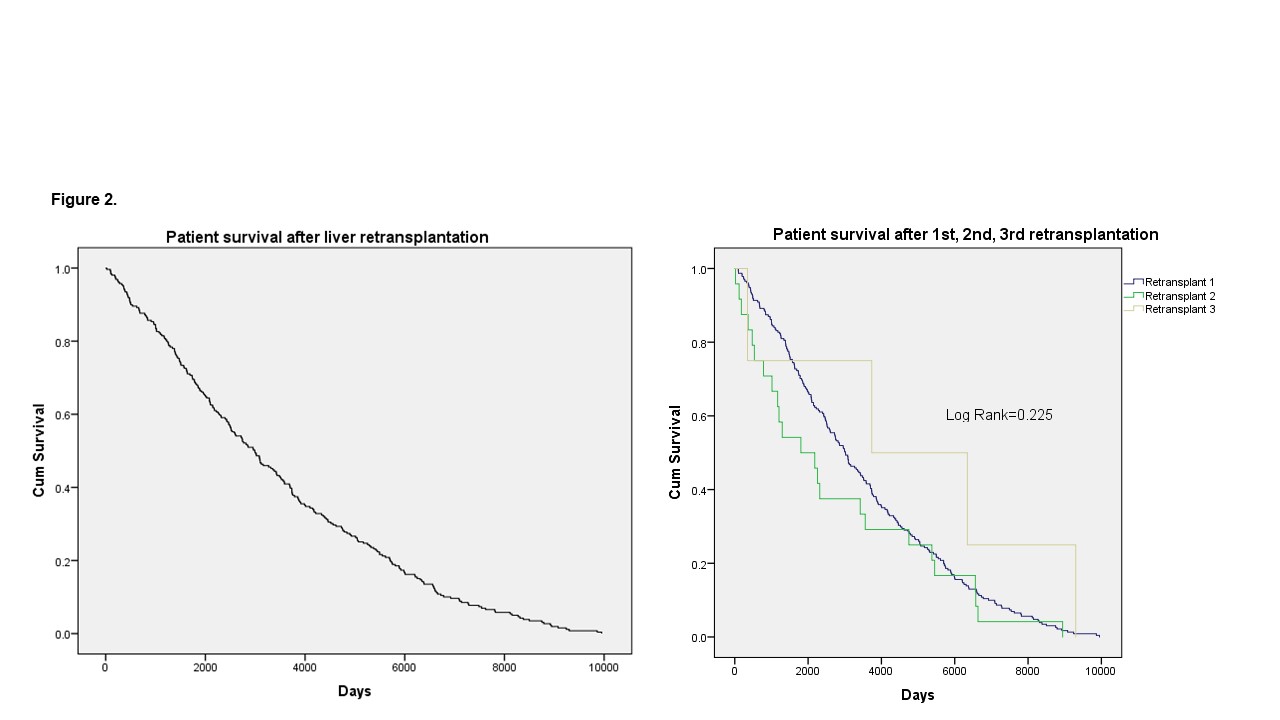Retransplantation in a High-Volume Institution: Historical, Socioeconomic and Survival Trends
The Mount Sinai Hospital, New York, NY
Meeting: 2022 American Transplant Congress
Abstract number: 853
Keywords: Graft failure, Liver transplantation, Retransplantation, Survival
Topic: Clinical Science » Liver » 51 - Liver: Retransplantation and Other Complications
Session Information
Session Name: Liver: Retransplantation and Other Complications
Session Type: Poster Abstract
Date: Saturday, June 4, 2022
Session Time: 5:30pm-7:00pm
 Presentation Time: 5:30pm-7:00pm
Presentation Time: 5:30pm-7:00pm
Location: Hynes Halls C & D
*Purpose: Retransplantation for liver allograft failure is a challenge within the field. The evolution of organ allocation policy from Child to MELD in 2002 and the creation of direct-acting antivirals (DAAs) for the treatment of hepatitis C in 2014 have changed the retransplant landscape. The aim of this study was to analyze historical socioeconomic and survival trends in retransplantation at a high-volume center.
*Methods: Medical records were reviewed from January 1988 through July 2019. Income data was derived using average income by home zipcode. Kaplan-Meyer survival analysis was performed using SPSS software.
*Results: Of the 4292 transplants performed during the study period, 442 were retransplants with a rate of 10.3%. During the Child era 42% of retransplants were performed for recurrent disease at our center. This dropped to 17% with the creation of the MELD system in 2002 and to 5.8% after the creation of DAAs in 2014. Time to retransplant also decreased with median time to retransplant in the Child era of 146 days to 26 days after MELD (Table 1). A greater proportion of retransplanted patients (21.7%) earned less than $50,000/year compared to 14% of all patients listed (Figure 1). Survival in retransplant patients was 95% 72% and 41% at 1, 5 and 10 years respectively. (Figure 2). Patients retransplanted a 2nd or 3rd time had similar survival.
*Conclusions: Changes in allocation policy and the creation of DAAs has shifted the etiology and indications for retransplant as well as time to retransplant. Socioeconomic factors may play a role in the risk of graft failure. Survival for retransplanted patients, including those undergoing 2nd and 3rd retransplant has been excellent at this high volume center.
| Child | MELD | Pre-DAA | Post-DAA | ||
| Acute or chronic Rejection | 23.15 | 15.07 | 21.84 | 5.88 | |
| Etiology (%) | Vascular or biliary complications | 21.18 | 42.47 | 24.14 | 70.59 |
| Recurrent disease | 42.36 | 17.81 | 37.93 | 5.88 | |
| Primary non-function | 0.49 | 0.00 | 0.38 | 0.00 | |
| Other | 12.81 | 24.66 | 15.71 | 17.65 | |
| Median days to retransplant | 146 | 26 | 98 | 26 | |
| Mean days to retransplant ± SD | 1140± 2063 | 677±1284 | 1049±1923 | 229±342 |
To cite this abstract in AMA style:
Ahrens Dvon, Sulimani O, Holzner M, Akhtar M, Florman S, Arvelakis A. Retransplantation in a High-Volume Institution: Historical, Socioeconomic and Survival Trends [abstract]. Am J Transplant. 2022; 22 (suppl 3). https://atcmeetingabstracts.com/abstract/retransplantation-in-a-high-volume-institution-historical-socioeconomic-and-survival-trends/. Accessed December 25, 2025.« Back to 2022 American Transplant Congress

